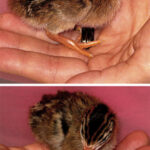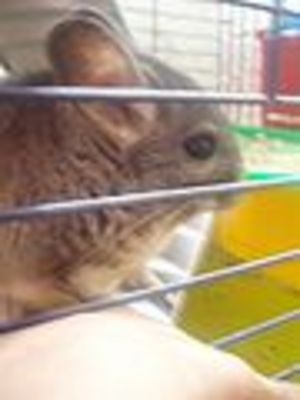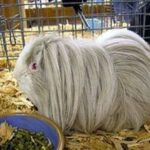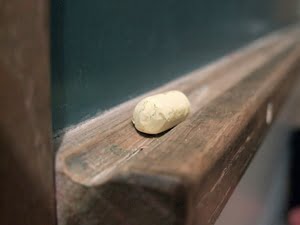Cute, furry, and very distinct looking, many people today are considering adopting a chinchilla as a pet. While small like a Guinea pig, the chinchilla requires an intermediate amount of care and is recommended as a pet for those that can devote at least two hours a day for its care. A pricey investment, chinchillas retail for around $150, and necessary supplies include: housing, food with bowl, water bottle, dust bath with dust, and a “Chin-chiller” for owners who live in warm climates.
By nature, chinchillas are nocturnal animals; however they can be trained to be active during the day. Should you choose to keep your chinchilla nocturnal or if you are not successful with training your chinchilla to be awake, plan on having your pet sleep most of the day only to wake when it is hungry. Be prepared for this cycle to continue for many years, as chinchillas can live up to 15 years. Additionally, your chinchilla will grow to a length of about 10 inches (plus a few more for the tail); so make sure your choice of housing is adequate.
When selecting a chinchilla’s housing, allow plenty of room for an optional wooden hut, optional Chin-chiller and a required dust bath unit. Chinchillas like to feel secure, so housing huts or igloos work well to provide your chinchilla with a sense of safety. If you plan on keeping your chinchilla in a warm area or by a window (but not in direct sunlight), you will most likely need a Chin-chiller. This is essentially a piece of granite where your chinchilla can stretch out and be cooled off by the natural stone. Finally, the most essential piece of equipment for any chinchilla’s cage is the dust bath. Chinchillas need to take a dust bath at least twice a week so their fur can remain clean and conditioned.
If you wish to companion your chinchilla, consider doing so when you originally purchase it. Chinchillas generally work well in same gender pairs, and those from the original litter tend to get along best. Should you decide that only one chinchilla is preferable for you, be sure to pick it up as often as you can. When this happens, do not be surprised if you get nipped. This is the chinchilla’s way of investigating their surroundings and they mean you no harm. Feed your chinchilla treats while you are holding it so it becomes familiar with your scent and remembers you as its friend. Apple and carrot slices make excellent treats, along with commercially prepared treat sticks, but all should be used sparingly. Make sure you purchase specified chinchilla pellet diet and incorporate Timothy and other grain hays daily.
Finally, know what to look for if you see your chinchilla acting strange and make sure it receives immediate vet attention. Some signs requiring an emergency vet visit include: bleeding, bloody stool, unusual or strange gait/movement, grinding teeth in pain, making an odd noise in pain, lack of appetite, unable to keep food or water down, or if you know it has been injured. Injured chinchillas can be wrapped in a towel for security and to avoid further injury risk. Make sure you keep the towel somewhat loose so your chinchilla will not overheat and be sure to tell your vet as much as you can about your chinchilla’s behavior. Most importantly, it is a good idea to locate a vet before bringing your chinchilla home, this way you will know who to call in case of an emergency.








